
Plants have numerous enemies, but if there are especially dangerous ones, they are mushrooms. These microorganisms live in the soil, although they also appear on growing substrates when they remain wet for longer than they should.
Unfortunately, when they become visible the disease has advanced a lot, so often the only treatment effective is to dispose of them. With this in mind, we are going to tell you what are the fungi that affect plants, its symptoms and what you can do to prevent them.
Fungi that affect plants
alternariasis
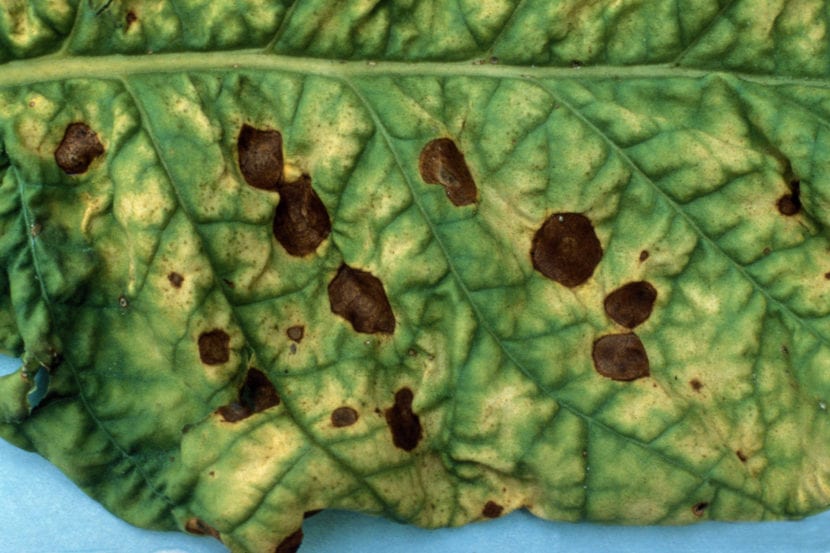
The Altenary is the genus that causes this disease, characterized by the appearance of well-defined black or brown spots that are growing and drying. It is very common especially in plants that are not being fertilized.
Transmission
Free. Fertilize the plants throughout the growing season with specific fertilizers for them.
Anthracnose
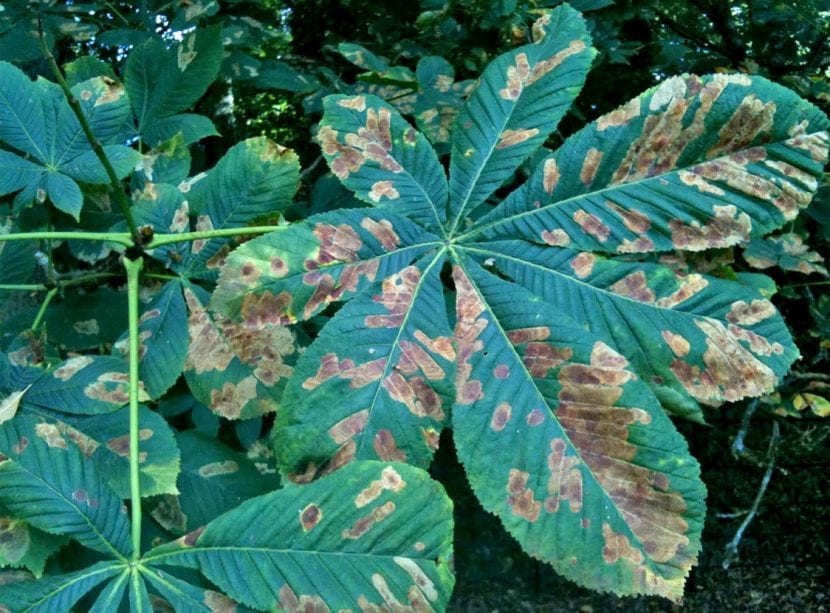
Image - Planetagarden.com
Fungi of the genera Colletotrichum, Gloeosporium and Coniothyrium, among others, cause anthracnose, one of the most dangerous diseases. Symptoms are appearance of brown spots on the leaves, defoliation (loss of leaves) in spring and summer, spots on the fruits y lumps on the logs.
Transmission
Consists in cut the affected parts y apply copper-based fungicides 3 times in seven day intervals. In severe cases, it is best to discard the plant to prevent fungi from infecting others.
Botrytis
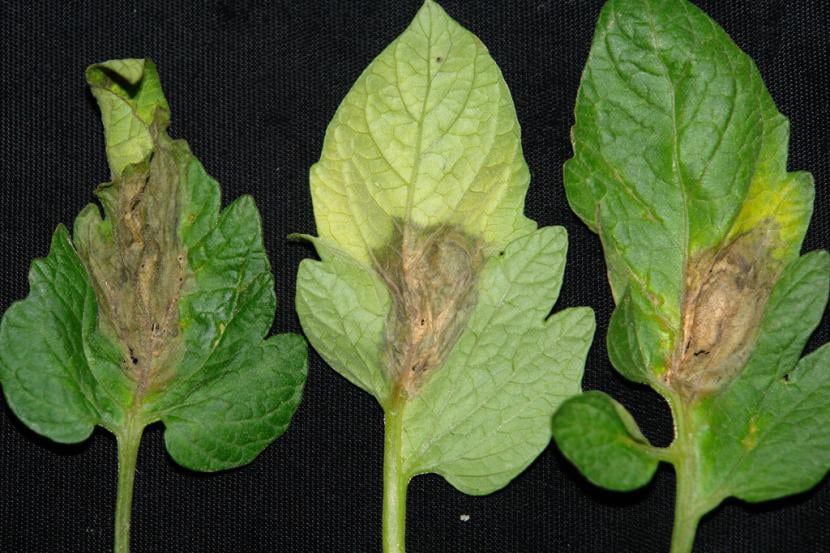
The fungus Botrytis cinerea causes the disease botrytis. This is a microorganism that infects plants through pruning cuts, wounds or cracks. The symptoms are: agray mold on leaves, buds and / or flowers, and pudrition of the stems in young plants.
Transmission
The treatment will consist of eliminate the affected parts, reduce the frequency of watering and treat the plants with systemic fungicides as Fosetyl-Al.
Root rot
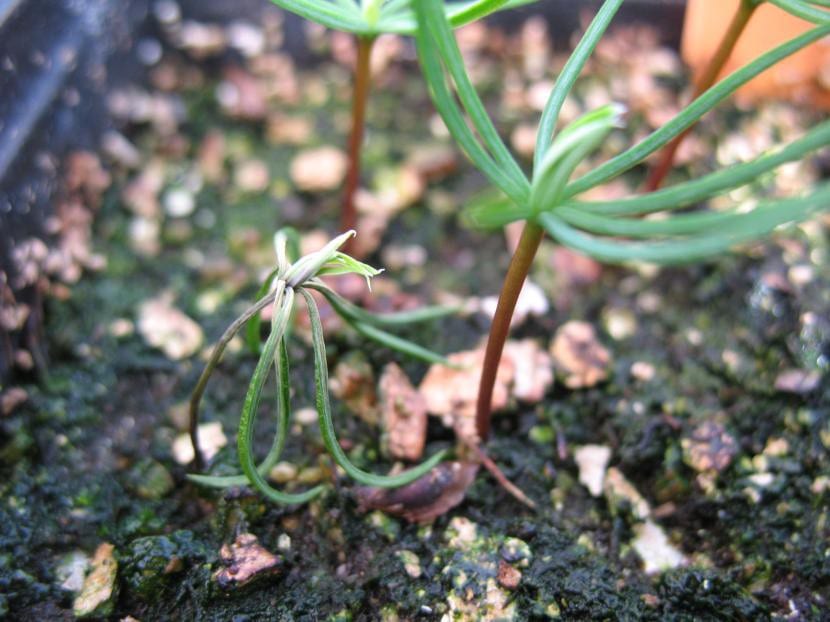
Image - Pnwhandbooks.org
It is caused by the fungi of the genus Phytophthora, Rizoctonia, and Pythium. They are very frequent in seedbeds, where they infect and kill young plants in a matter of days, but also in those plants that are being watered excessively. The symptoms that will be observed are: blackening of the base of the stem that is spreading upwards, dry leaves that fall, growth arrest.
Transmission
Free. Substrates that have very good sewer system, control the risks and treat them with fungicides. In spring and autumn you can sprinkle sulfur or copper on the surface of the substrate once every 15 days, and during the summer treat them with systemic fungicides.
Fusarium
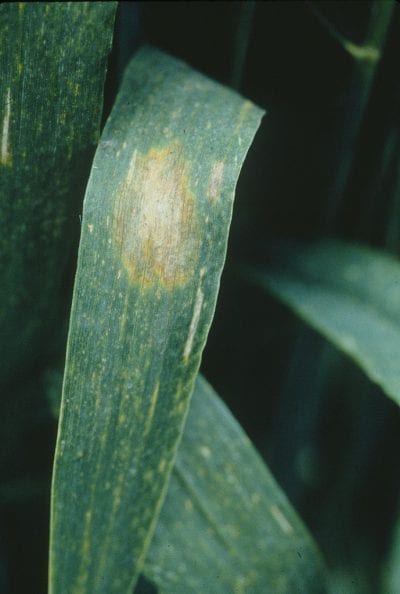
The Fusarium fungus is one of those that causes the most damage to plants. There are more than a thousand potentially dangerous species for them. Because, you have to be attentive to the symptoms, which are: rotting of the roots, wilting and necrosis of the leaves, appearance of spots on the leaves and / or stems, and growth arrest.
Transmission
It will consist in cut the affected parts and treat them with fungicides systemic.
Sclerotonia
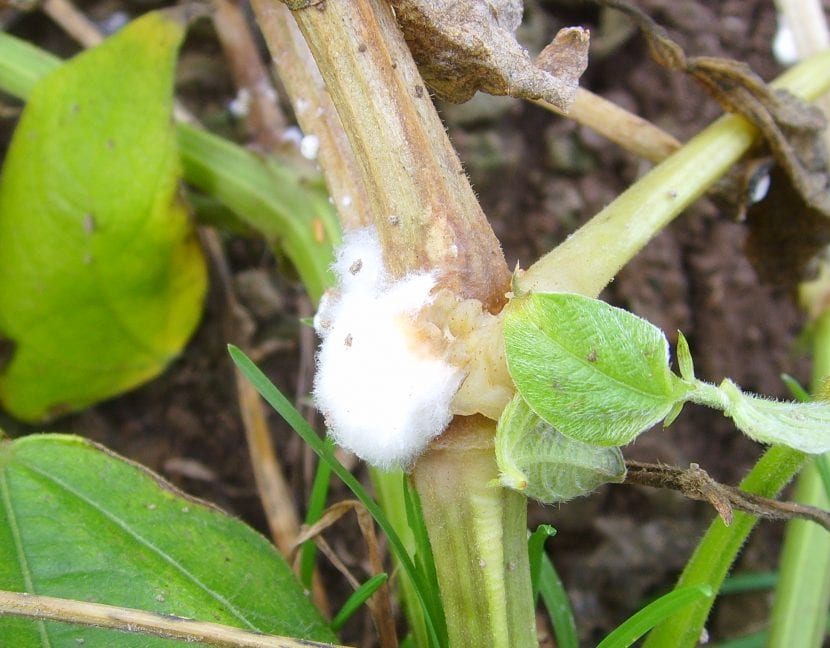
Caused by the Sclerotinia fungus, it is a disease that especially affects plant stem. White, watery rot appears that does not give off a bad odor. It can be seen as if the stem is covered by cotton, which is nothing more than the cottony white mycelium of the fungus.
Transmission
Free. Controlling the waterings and keeping the plants properly fertilized will help to avoid the disease.
Bold
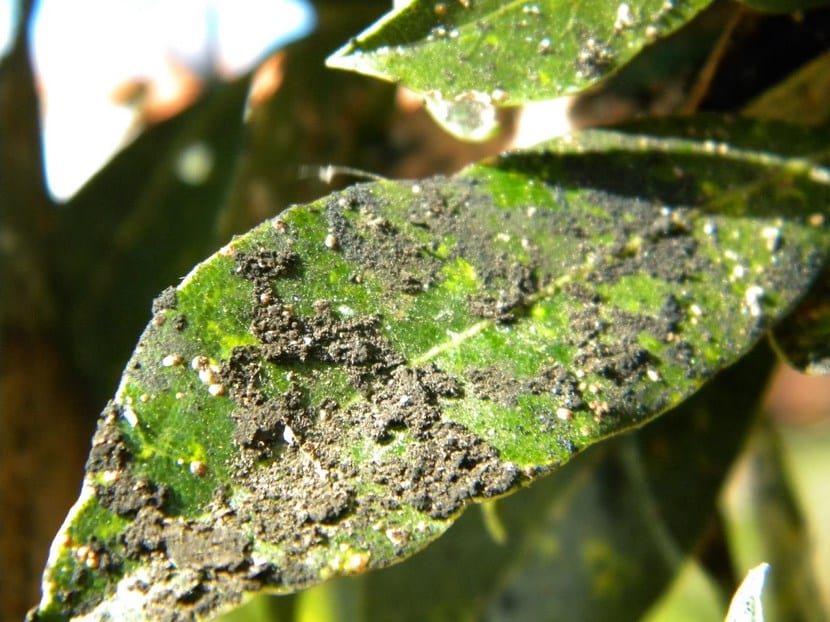
The fungus of the genus Sooty mold causes the disease known as bold, which in turn is caused by aphids, mealybugs y white flies. These insects excrete a substance rich in sugars, which is what the fungus sits on. The damages are mainly aesthetic: it is observed as a dry black powder on the leaves and fruits.
Transmission
As it can also affect the normal growth of plants, it is recommended eliminate the mentioned insects with specific insecticides or with natural remedies that we explain in this article.
Powdery mildew
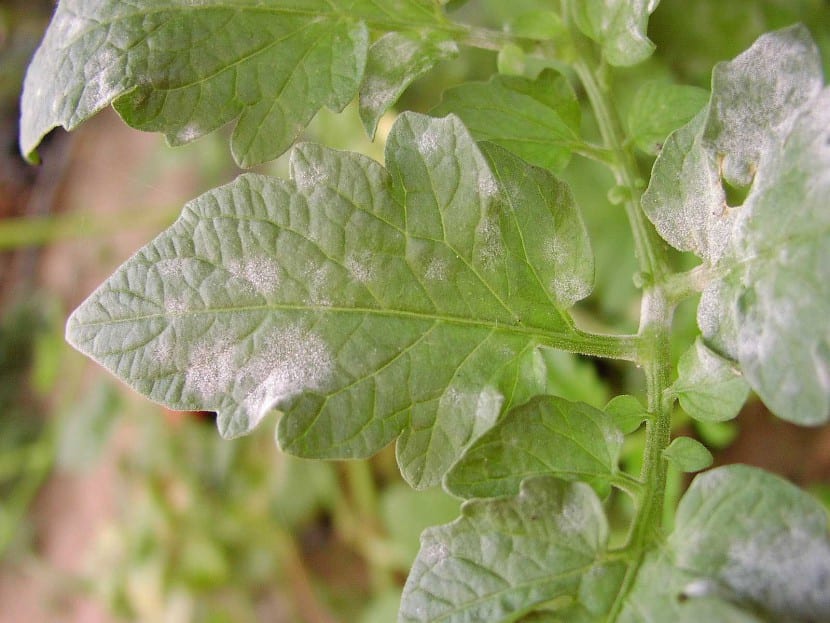
Hate is a disease caused by different types of fungi, such as Uncinula, Erysiphe or Sphaerotheca, among others. It produces symptoms similar to botrytis, but it differs mainly because these fungi only affect the leaves, where they will appear whitish spots who will join. As the days go by, they will dry up and fall off.
Transmission
To control and eliminate it, the plant must be treated with systemic fungicides based on copper or sulfur.
Roya
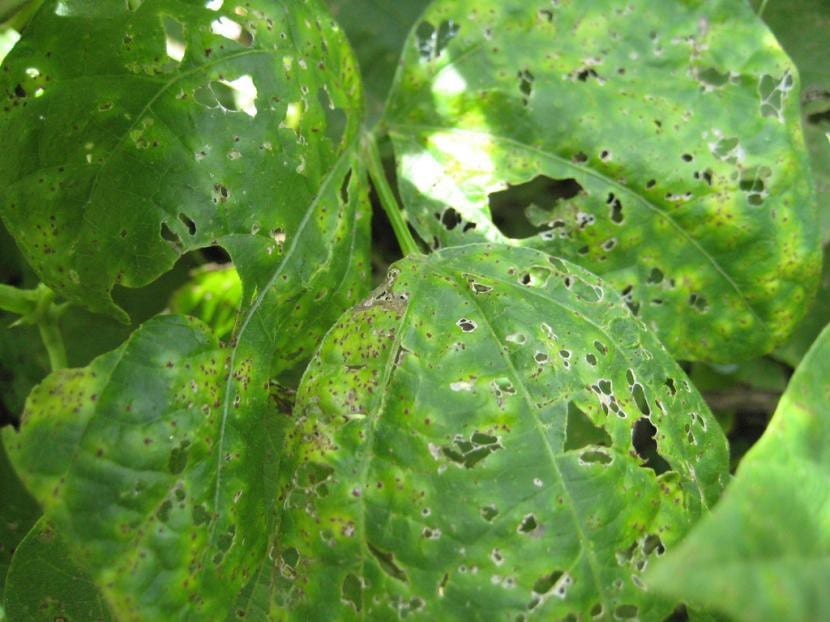
Rust is a disease caused mainly by fungi of the genus Puccinia and Melampsora. The symptoms it produces are orange pustules or bumps on the underside of leaves and stems that turn black. On the beam, yellowish spots can be seen. Over time, the leaves fall.
Transmission
It can be treated and removed with Oxycarboxin-based fungicides, and removing the affected leaves.
How to prevent fungi?
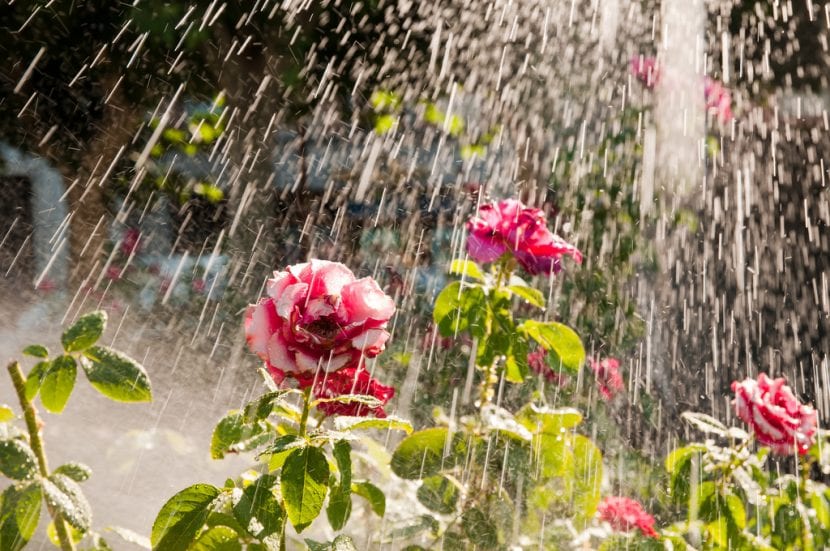
Avoid wetting the leaves and flowers during watering so that they do not get sick.
As we have seen, there are several that can affect plants. But they can be prevented if we do a number of things:
- Do not over water: we have to water only when necessary, no more, no less. In case of doubt, it is very important to check the humidity of the soil, and for this we can insert a thin wooden stick (if it comes out clean, we can water it), or weigh the pot once watered and again after a few days (this difference in weight can serve as a guide).
Likewise, if we have a plate under them, we will remove the excess water 10 minutes after watering. - Use substrates that have good drainage: Especially if we grow succulents, it is necessary that we plant them in pots with a soil that drains well, such as black peat mixed with equal parts perlite, akadama, or pomx.
- Avoid wetting the aerial part of the plants: When we water, we must not wet the leaves or flowers, as they could become ill.
- Pay them: Throughout the growing season it will be necessary to fertilize them so that they remain strong. In the nurseries we will find specific fertilizers for each type of plant, but we can also use Organic fertilizers.
- Buy healthy plants: no matter how much we like a certain plant, if it is not healthy, that is, if it has a plague or any symptoms of disease like those we have mentioned, we will not have to buy it. If we do, we would put the health of those we have at home at risk.
- Clean pruning tools before and after usePruning is a very necessary job, but if we don't use clean tools we risk fungi infecting the plants. To clean them we can use pharmacy alcohol or soap.
- Put healing paste on wounds: especially if we have pruned woody plants, it is advisable to seal the wound with healing paste. This paste will not only accelerate healing, but also prevent microorganisms from infecting them.
And with this we are done. We hope that from now on you can know what to do to prevent and / or eliminate fungi in your plants, although if you have doubts, you already know where to find us 🙂.


Hello how are you? Every so often a kind of soft white fungus appears in my garden that turns hard and dark like wood at the base of plants. its meat is like wood and it does not smell bad. Today I discovered the same thing on the ground around a saint rita and was climbing upwards, when I took it out I saw that it leaves the trunk bare. When you remove it with a shovel it costs because it is stuck in the ground with force. What variety will it be? I live in San Juan with a dry climate. It is already the second year that I see them and I extract them. how to remove them?
Hi Stella.
You can remove them with sulfur or copper in spring and fall (use spray fungicides in the summer). Sprinkle on the surface of the substrate and water.
A greeting.